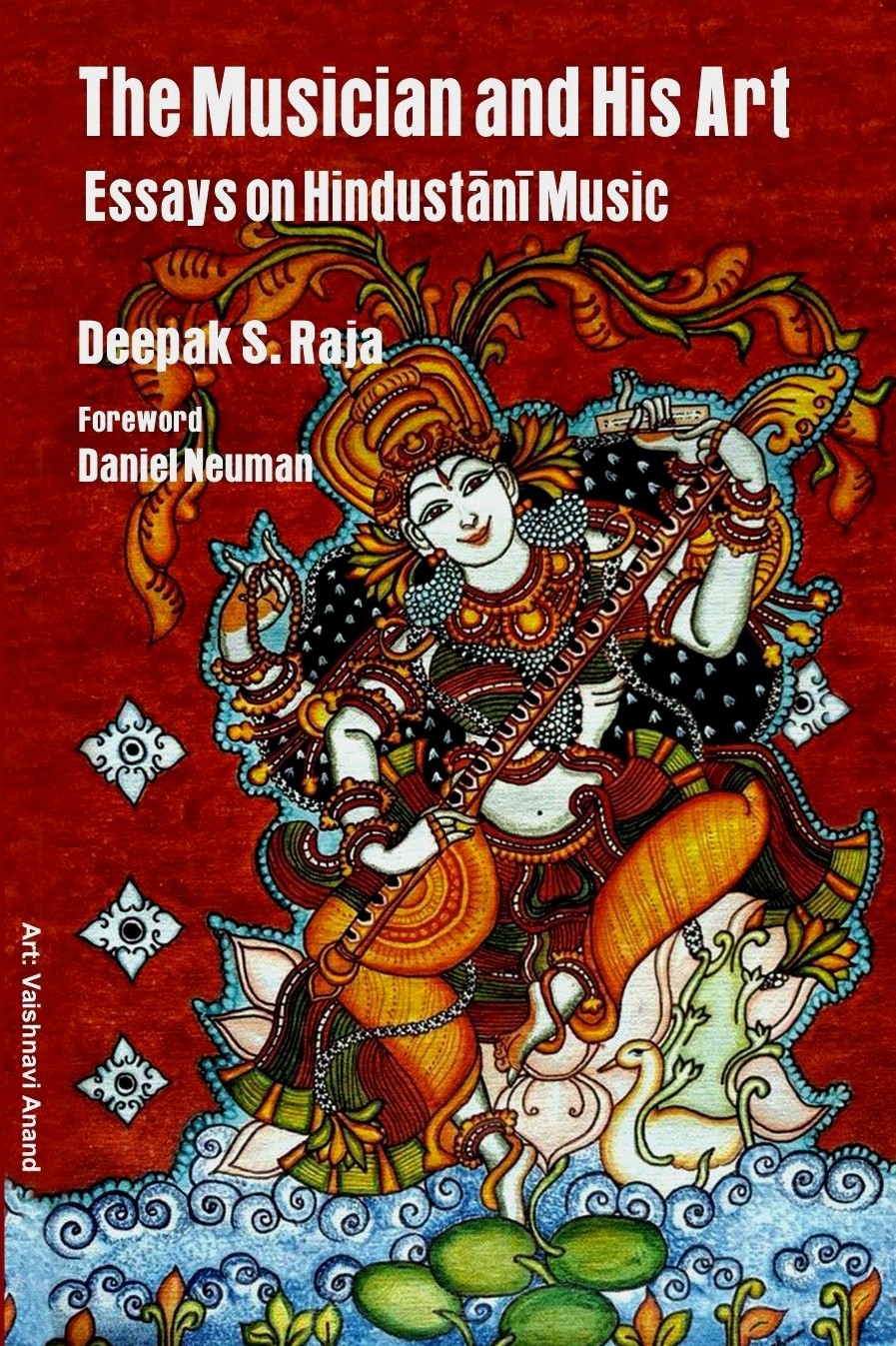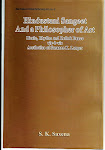 Introduction: Prof. Kalyan Mukherjea (1943-2010) was an outstanding sarod player, trained by two eminent Gurus of Bengal -- Radhika Mohan Maitra and Prof. DT Joshi. Prof. Mukherjea also happened to be an eminent Professor of mathematics. He allowed the musician in him to be rediscovered after a chance encounter with Lyle Wachovsky of India Archive Music, New York.
Introduction: Prof. Kalyan Mukherjea (1943-2010) was an outstanding sarod player, trained by two eminent Gurus of Bengal -- Radhika Mohan Maitra and Prof. DT Joshi. Prof. Mukherjea also happened to be an eminent Professor of mathematics. He allowed the musician in him to be rediscovered after a chance encounter with Lyle Wachovsky of India Archive Music, New York.Mukherjea's took his basic degree in Mathematics at Cambridge in England, and a Ph.D. from Cornell (Ithaca, NY.USA). He served on the Mathematics Faculty of the University of California at Los Angeles (UCLA) for eight years. In his last years, he was associated with the Indian Statistical Institute, Calcutta.
In his e-mail to Deepak Raja (June 25,1999), Kalyan Mukherjea said: "I was a radio artist in India for six years; but I never had a musical career. I have played if and when asked to. Even in Bombay, I have performed only twice or thrice. I am not sure Bombay audiences should feel specially deprived, because in totality, between 1989 and 1995, I have done only two concerts. After my stroke in May, 1995, I am a hemiplegic, and now, only an ex-sarod player."
Prof. Kalyan Mukherjea writes about his evolution as a musician.
Bernard Shaw is reported to have remarked that his education had continued unabated throughout his life, except for a brief interruption when he was sent to school. I hope I do not give a similar impression in what follows, since I attach a considerable degree of significance to my development when I was not under the tutelage of a Guru.
I started learning the sarod at the age of twelve from the late Pandit Radhika Mohan Maitra. Besides being much admired as a musician with an impeccably pure and orthodox style, he was - already at the age of forty - a teacher of great repute. This reputation, of course, attained legendary proportions by the time of his untimely death in 1981.
As with all beginners amongst his students, he started me off with a year or so of rote learning. I would visit him once a week, and copy out the set pieces. The following week, I would play what I had taken down the previous week, and satisfy him that I had, indeed, mastered the material. These pieces, in twelve elementary ragas, had been written down in voluminous ledgers by one of his earlier students during the early stages of tutelage.
It was a somewhat tedious affair. Now I realise that what he was trying to achieve was not just getting our hands working properly. He was also inculcating in us good musical taste, correct grammar, and diction. His pupils can easily be recognised by the way they blend intricate right hand plucking (bols) with the melodic line and this, I feel, is a consequence of this early rote drill that we went through.
Once Radhika Mohan decided that the basic skills had been transferred, he proceeded to teach me to improvise. The first session, as with all students, was alap in Malkauns. He would sing and I would try to play the phrases back to him. The week following, I would have to improvise along the lines he had indicated the previous week and he would correct what he perceived to be errors and faults. After my skills on the instrument had outstripped his somewhat limited prowess as a vocalist, he started to play his sarod while teaching me, and I would follow him, repeating his phrases. This is how I received all my lessons after the third year on. I recall, I learnt only three ragas (Malkauns, Bageshri, and Poorvi) in the first two years of improvisation.
What might surprise some is that he never asked me to play a phrase for the reason that it would make my recitals attractive. If he commended a phrase, he would prefix it with some comment like "this is where the raga lives" or "without this, you cannot make the raga's character clear". His philosophy was that the student should improvise according to what seemed attractive to his own, rather than Radhika Mohan's, musical thinking. There was no point, according to him, in teaching a horde of people to play according to the taste of Radhika Mohan.
This has had the peculiar consequence that his better students play completely different styles, although they are instantly recognisable as Radhika Mohan's students. Moreover, they disagree quite openly about what constituted the essential ingrediants of Radhika Mohan's style and what is the musical legacy they ought to preserve for future generations.
During the years of 1960-61, there was a break of sorts in my tutelage under Radhika Mohan. At that time, his friend, Prof.DT Joshi, was spending some time in Calcutta. I had just finished my Intermediate Degree exam and found it easy to spend the whole morning and evening learning from Joshi. In the afternoons I would go to Radhu Babu. When college resumed for my final year of Degree studies, Radhu Babu stopped teaching me. Instead, he instructed me to devote my limited time to music studies with Prof.DT Joshi.
In fact, this did not matter very much; both Radhu Babu and Joshi-ji came around every evening to chat with my father, and after they had settled down with their refreshments, I would be summoned and would have to satisfy both the Gurus that I was not getting corrupted by the other one's tutelage. So, I ended up having more 'taleem' than ever before.
Those who are not aware of how jealously Hindustani musicians guard their pupils from being influenced by other musicians, will not realise what extraordinary breadth of mind and heart Radhika Mohan showed by this gesture. I cannot imagine any other guru showing this kind of generosity and such a confident ego.
Between 1962 and 1976 I lived largely outside India, first studying at Cambridge (England) and Cornell (Ithaca, NY) and finally teaching for eight years at UCLA. Although I would resume my lessons with Radhika Mohan whenever I was back home on vacation, my musical attitudes changed rather dramatically over these years abroad.
This was the first time I was being exposed to different traditions in music. I do not think that Western classical music and Jazz, the only two musics I learned to enjoy, had any direct effect on my music. However, this exposure broadened my musical horizons enormously.
For example, I became aware that the sarod was, relatively speaking, a rather undeveloped instrument. Nothing about the sarod is standard - not the wood it is made of, not the number of strings, not the fingering, not the material out of which the bridge is made. All these are variable and attributed to differences of opinion between exponents of different gharanas. When one compares this with the situation obtaining in the violin or the piano, one realises that what is involved is not merely a matter of different musical schools playing different styles using slightly different techniques. It could be that a single basic entity is still undergoing a process of evolution along different lines. Certainly I feel this is so, and hence have had no compunction whatever about experimenting with the technical aspects of sarod playing.
I have tried out different fingering techniques, different materials (such as Teflon and ebony) for the plectrum and even an abortive attempt at using Kevlar for covering the drum of the sarod !
Of other interesting and ultimately rewarding experiences, I ought to mention is my participating in the graduate seminars on Hindustani music conducted at UCLA by Prof. Nazirali Jairazbhoy. It is in these seminars that I first saw how an undogmatic and analytical approach to our music can help demystify and clarify a lot of do's and don'ts that pervade the teaching of every gharana.
When I returned to India in 1976, I resumed learning from Radhika Mohan. But, this was quite different from my earlier training. He had formally retired from playing in public and was, as a result, often not in the best of shape in terms of technical virtuosity. However, he was now more willing to talk about the esthetic aspects of presenting a piece of music to an audience. He was also more mellow in his approach to the raga. He even conceded that it might be permissible to violate the law as long as the spirit of the raga was enhanced by this license. I certainly found this new (really older!) Radhika Mohan an extraordinarily sensitive teacher, ideally suited for advanced students who had already developed a musical personality of their own.
Every musician learns from other musicians, especially those who are his friends. I have had many such friends to whom I owe a debt. In have particularly rewarding memories of the two summers I spent in Bombay, visiting the Mathematics Department of Tata Institute of Fundamental Research. On those sojourns, I stayed with my friends, Parveen Sultana and Dilshad Khan. This was the only time I have actually lived with professional musicians and seen how they go about the business of keeping their musical skills in fine fettle. Dilshad would, in particular, goad me into practicing harder. This was a delightful experience and I am sure my music gained from it.
I must finally add that I find the process of teaching - even complete beginners - an interesting and rewarding experience. I have been fortunate in having had very interesting students, including those who wouldn't be welcomed by most sarod players. Trying to help a gentleman who is starting on the sarod at the age of sixty with the only ambition of playing ten, or fifteen minutes of alap in Malkauns, or trying to explain to a young American with very fast hands how to settle down and play a raga correctly and methodically, is certainly challenging. But, in doing so, the teacher ends up with a clearer conception of what is essential to the music he plays.
So, I find that my musical education has continued unabated throughout my life . . . .
© India Archive Music, Ltd. New York. Producers of the finest recordings of Kalyan Mukherjea. IndiaArcMu@aol.com




